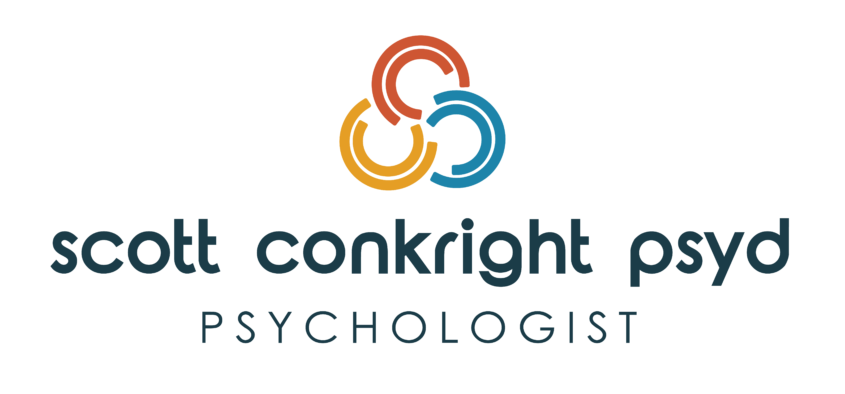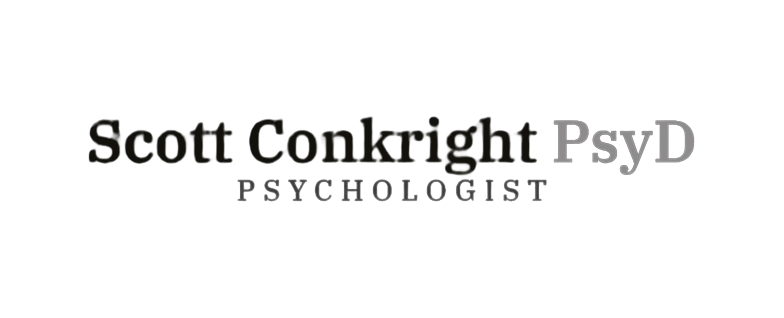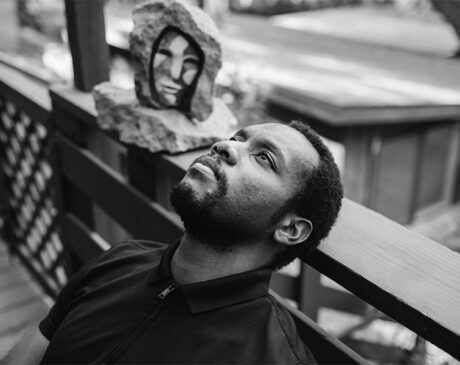Shame As Your Spirit Guide

Shame is your spirit guide. Shame motivates you to correct real or imagined “bad” things, improve them, and bring you closer to some ideal – full knowledge and a sense of belonging to everyone, including God. Shame is also a protector. And it will protect you with the best weapons it has been given. Shame is a judge. Shame is ashamed of itself. It acts judgment of its own shame. Shame is also a teacher. Without it, we would not know how close or far to stay away from each other. Shame is shame because it repeats itself. Because it echoes.
Ancient Proverb
This ancient saying offers a profound and multifaceted reflection on shame, made more apparent with insights derived from affect theory. I present shame here not merely as a negative emotion to be avoided but as a complex and integral aspect of human psychology with the potential to guide, protect, teach, and transform. Here’s how we can understand and interpret its wisdom through the lens of affect theory:
Shame as a Spirit Guide
The poem begins by positing shame as a “spirit guide,” suggesting that it is essential in guiding us towards better versions of ourselves. This aligns with affect theory’s understanding of shame as an innate effect that disrupts positive affect flow. It motivates us to correct behaviors that may alienate us from others or ourselves, thus serving as a social and personal improvement mechanism. Shame, in this light, is a catalyst for growth, prompting us to address and amend our missteps, aligning our actions more closely with societal and personal ideals.
Shame as a Protector
The notion of shame as a protector echoes affect theory’s perspective that shame can serve as a protective mechanism, alerting us to potential threats to our social bonds and self-esteem. By experiencing shame, we become aware of behaviors or actions that may lead to social exclusion or self-disgust, thus enabling us to navigate our social world more cautiously and maintain our belonging.
Shame as a Judge and Its Self-Reflection
Describing shame as a judge who is “ashamed of itself” introduces a recursive, self-reflective aspect to shame. It suggests that shame judges our actions and subjects itself to scrutiny. This can be understood as the internal process of evaluating our own shame responses, questioning their validity, and assessing whether they are proportionate to the situation. This self-assessment can lead to a deeper understanding of our values and beliefs, fostering a more compassionate and nuanced relationship with ourselves and our emotions.
Shame as a Teacher
Shame isn’t just about feeling bad after scrolling too much on social media or messing up at work; it’s like a built-in social GPS guiding us through the complexities of our social world. Think of it as the feedback no one asked for but somehow always needed. It flags when we’re about to cross an invisible line, whether that’s oversharing online or ghosting someone. That gut-check moment makes us pause and think, “Is this really okay?”
Social Skills Boot Camp
Why do specific actions feel off? That’s shame. It’s shame working behind the scenes, teaching us the unspoken rules of social engagement. It’s like an internal boot camp for social skills, highlighting the dos and don’ts through personal experiences of discomfort. This is about something other than following the crowd, but understanding the impact of our actions on others and navigating social settings more thoughtfully.
Empathy’s Seed
Feeling shame isn’t just personal; it’s a crash course in empathy. It shows us how our actions might land with others, pushing us towards a more empathetic viewpoint. By walking a mile in those uncomfortable shoes, we’re better equipped to connect with others’ feelings and perspectives, making our interactions richer and more genuine.
Keeping the Social Fabric Intact
On a larger scale, shame is the glue holding our social fabric together. It reminds us that our actions echo beyond our immediate bubble, affecting the broader community vibe. Shame ensures we maintain a sense of belonging and harmony within our circles by steering us to the correct course when we veer off the path.
Personal Growth Through Reflection
Instead of dodging shame, embracing it as a growth opportunity can lead to profound personal insights. It invites us to reflect on our missteps, not for self-flagellation but for genuine self-improvement. This isn’t about beating ourselves up but about evolving and enhancing our ability to engage more consciously and conservatively with the world around us.
With all its discomfort, shame is an unsung hero in our personal development and social interactions. It teaches us valuable lessons about boundaries, empathy, and maintaining a balanced social ecosystem. Recognizing and respecting its role can transform awkward or painful moments into stepping stones for personal growth and deeper connections.
The Repetitive Nature of Shame
Finally, the poem’s reflection on shame’s repetitiveness and its echoing nature speaks to the often cyclical process of experiencing, learning from, and sometimes being caught in patterns of shame. This repetition can be both a challenge and an opportunity; it represents the persistent nature of shame as a signal that demands attention and action, but it also underscores the potential for recurrent shame to initiate deeper introspection and lasting change.
In light of affect theory, this ancient wisdom on shame reveals it as a complex, multifaceted affect deeply woven into our psychological and social lives. Far from being merely destructive, shame has the potential to be a powerful force for personal growth, social learning, and a deeper understanding of our place within the collective human experience. Recognizing and engaging with shame constructively can lead to profound personal development and a more empathetic, connected society.
Shame judges our internal dialogues, as highlighted in the ancient poem/adage and explored through affect theory. This internalized judge evaluates actions, thoughts, and feelings against a set of standards—both those we’ve absorbed from our culture and those we’ve set for ourselves. The experience of being “ashamed of my shame” adds a layer, indicating a recursive aspect where shame not only judges but becomes the subject of its own judgment.
Shame as Your Worst Enemy
Viewing shame as your “worst enemy” speaks to the pain and isolation it can cause. The part of you that criticizes holds you back from expressing your true self for fear of judgment or rejection. This adversarial relationship with shame can be deeply distressing, creating barriers to connection and authenticity.
Shame as Your Oldest Friend
Conversely, calling shame your “oldest friend” acknowledges its pervasive, enduring presence. It suggests a familiarity with shame that might come from frequent encounters or a long history of navigating its challenges. This perspective can also reflect an understanding of shame’s protective intentions—aiming to keep you within social norms and potentially safe from external judgment or isolation, even when its methods are painful or counterproductive.
As depicted through Tomkins’ affect theory, shame plays a dual role in our lives: it serves as a complex guardian of our social bonds while simultaneously challenging our relationship with ourselves. This duality makes navigating personal growth and social integration a nuanced dance, where the steps between conformity and authenticity are often hard to discern.
The Guardian Role of Shame
Shame arises as a guardian, alerting us when veering away from social norms that glue us to our communities. It’s a built-in alarm system, wired into our earliest interactions, reminding us that our actions have social ramifications. This protective aspect of shame is vital; it keeps us connected and mindful of our social fabric. Yet, this protective quality can morph into a formidable barrier, stifling our individuality and the spontaneous joy, creativity, and authenticity that make us who we are. The fear of activating this alarm can lead us to censor parts of ourselves, trading our uniqueness for acceptance, and sometimes, at the cost of our integrity and happiness.
Shame as an Interrupter
Tomkins illuminates shame’s role in interrupting positive experiences, such as joy or excitement, with a subtlety that can quietly alter our emotional state. This interruption is not just about stopping positive feelings; it’s a signal that something needs our attention—whether it’s an aspect of ourselves that doesn’t align with our values or an external judgment we fear. The physiological cues of shame—looking away and making oneself small—are external manifestations of an internal desire to hide from what we perceive as a threat to our belonging.
The Complexity of Navigating Shame
Understanding shame as a mechanism for protection allows for a more compassionate approach to self-growth. It’s not about eradicating shame but learning to recognize its signals and what they can teach us about our needs, values, and fears. This process involves identifying what triggers our shame, understanding its messages, and developing compassion for ourselves in the face of it. Sharing these experiences can also lessen shame’s grip, reinforcing our sense of belonging and deepening our connections with others.
The Impact on Our Relationship with Ourselves
Shame’s dual nature—its intent to protect us from social isolation and its suppression of our true selves—creates a significant challenge in maintaining a healthy relationship with oneself. This internal conflict often manifests as a relentless inner critic, skewing our self-perception and overshadowing our worth. The effort to avoid shame’s discomfort can suppress our authenticity, creating a gap between our ideal self and the persona we present to the world. Additionally, shame discourages vulnerability, a cornerstone of self-growth and emotional resilience, by framing it as a weakness.
This barrier to vulnerability and the fear of social rejection complicate our ability to form meaningful connections, including the one with ourselves. It fosters a reluctance to explore and embrace our needs, desires, and emotions, distancing us from a grounded sense of self.
As an affect, shame protects and inhibits, playing a pivotal role in shaping our social interactions and our relationship with ourselves. By approaching shame with curiosity and compassion, we can see it not as an enemy but as a guide toward deeper self-awareness and growth. This journey involves acknowledging shame’s protective intentions, understanding its messages, and fostering an environment of self-compassion and vulnerability. Through this lens, we can transform our engagement with shame from a source of self-criticism to empowerment, paving the way for a more authentic and fulfilling relationship with ourselves and others.
Navigating Shame’s Dual Roles
The duality of shame—as both an adversary and a companion—underscores its complex role in our internal lives. This dynamic is characteristic of the “judge” type of internal dialogue, where shame evaluates and often harshly criticizes our actions and selves against an internalized set of expectations and norms.
However, recognizing this dynamic offers a pathway to transforming your relationship with shame, and understanding shame as a signal rather than a verdict can shift your response. Rather than allowing shame to spiral into self-criticism or avoidance, you can see it as an invitation to explore underlying values, fears, and desires. This shift allows for a more compassionate self-inquiry, where you can ask:
- What is this shame pointing to, which I care deeply about?
- How can I address the underlying needs or values constructively?
- How might I offer myself the same understanding and compassion I would offer a good friend?
By engaging with shame from a place of curiosity and compassion, you can begin to dismantle its role as an enemy and understand its presence as a complex but navigable part of your emotional landscape. This approach doesn’t eliminate shame but can significantly alter its impact, transforming it from a source of pain and isolation into a catalyst for growth and connection.
Understanding affect theory, particularly the central role of shame in our lives, is akin to unlocking a deeper layer of our emotional intelligence that profoundly shapes our interactions, self-perception, and the narratives we construct about our place in the world. This comprehension is not just academic—it’s a vital tool for navigating the complexities of modern life, marked by its constant flux of social dynamics, personal aspirations, and the pervasive influence of digital culture.
Emotional Navigation in a Connected World
In an era where our lives are increasingly displayed and scrutinized through digital platforms, the triggers for shame are magnified. Every post, tweet, or share invites judgment, comparison, and the potential for shame, making it more crucial than ever to understand the mechanics of this affect. Recognizing shame as an innate, biological response rather than a personal flaw can alter our engagement with these digital spaces, helping us navigate them with resilience and authenticity.
The Power of Vulnerability
Navigating the emotional landscape of shame and vulnerability is like walking a tightrope between wanting to hide every part of ourselves that might get judged and the deep-seated need to connect with others on a fundamental level. Shame kicks in as our emotional alarm system, flashing warning signs when we’re about to step outside the social lines we’re expected to walk within. It’s our internal cue to retreat and mask up, protecting ourselves from potential social fallout. But here’s the twist: the act of retreating and dialing down our authenticity to avoid judgment often leaves us feeling isolated and disconnected.
The Real Deal with Shame and Opening Up
Shame whispers to us to keep our guards up, to save face by not showing the messier sides of our experiences or the raw edges of our emotions. It’s that momentary pause before we decide to share something personal, questioning if it’ll lead to a laugh, a nod, or an awkward silence. Yet, there’s something incredibly freeing about flipping the script—sharing our imperfect selves. We find our most vital connections, creative moments, and most authentic leadership qualities in this choice to be vulnerable and open up despite the fear of judgment.
Embracing Vulnerability as a Strength
Contrary to what that inner alarm system of shame might tell us, there’s immense strength in vulnerability. In those moments of genuine sharing, we realize our struggles, doubts, and fears aren’t just our own but part of a shared human experience. This isn’t about exposing ourselves to criticism but about finding common ground, about the relief that comes from discovering we’re not alone in our experiences.
Learning from the Signals
Shame signals the moments when joy gets blocked or excitement dims, not just throwing us into a loop of self-protection. It also highlights opportunities for growth, pointing out exactly where the barriers to our happiness and fulfillment lie. When we confront these moments with openness, we not only navigate the social maze with more awareness but also master the art of moving forward and growing from these experiences.
The Game-Changer: Choosing to Share
The real game-changer lies in choosing to share our true selves, to lean into vulnerability when everything in us is screaming to do the opposite. This is about more than carelessly laying all our cards on the table and discerning which parts of our story can foster connection, spark creativity, and inspire others. It’s about turning vulnerability from a feared opponent into an ally.
In sum, the dance between shame and vulnerability is complex, filled with moments of hesitation and leaps of faith. But it’s within this dance that we find the pathways to deeper connections, richer experiences, and a more authentic existence. Despite the risks, turning towards vulnerability invites a world where our interactions are marked by understanding, empathy, and genuine connection, transforming not just how we view ourselves but how we engage with the world around us.
Rewriting Personal Scripts
Affect theory offers a lens through which to view the “scripts” that dictate our reactions and behaviors, many of which are rooted in early experiences of shame. These scripts can limit our potential, dictating how we respond to failure, criticism, and rejection. By understanding these patterns, we can actively rewrite our scripts, choosing responses that align with our values and aspirations rather than those shaped by past shame. This proactive stance empowers us to live more fulfilled and authentic lives.
Fostering Empathy and Community
Recognizing the universal experience of shame allows us to find powerful common ground with others. This understanding fosters empathy, allowing us to connect more deeply with those around us. It challenges us to create online and offline spaces where openness and empathy replace judgment and isolation. Through this lens, the emphasis shifts from individual achievement to collective well-being, highlighting the importance of community and support in overcoming the barriers shame often erects.
The Path to Emotional Resilience
Finally, understanding affect theory and the role of shame is essential for developing emotional resilience. This resilience enables us to face challenges, criticisms, and inevitable failures with grace and grit, viewing them as opportunities for growth rather than insurmountable setbacks. It cultivates a mindset that values self-compassion over self-criticism, leading to healthier coping strategies and a more balanced emotional life.
Delving into affect theory, especially its insights into shame equips us with the tools to navigate the complexities of modern identity, relationships, and society. It offers a path to a more empathetic, connected, and authentic existence, transforming our understanding of ourselves and the world around us.






